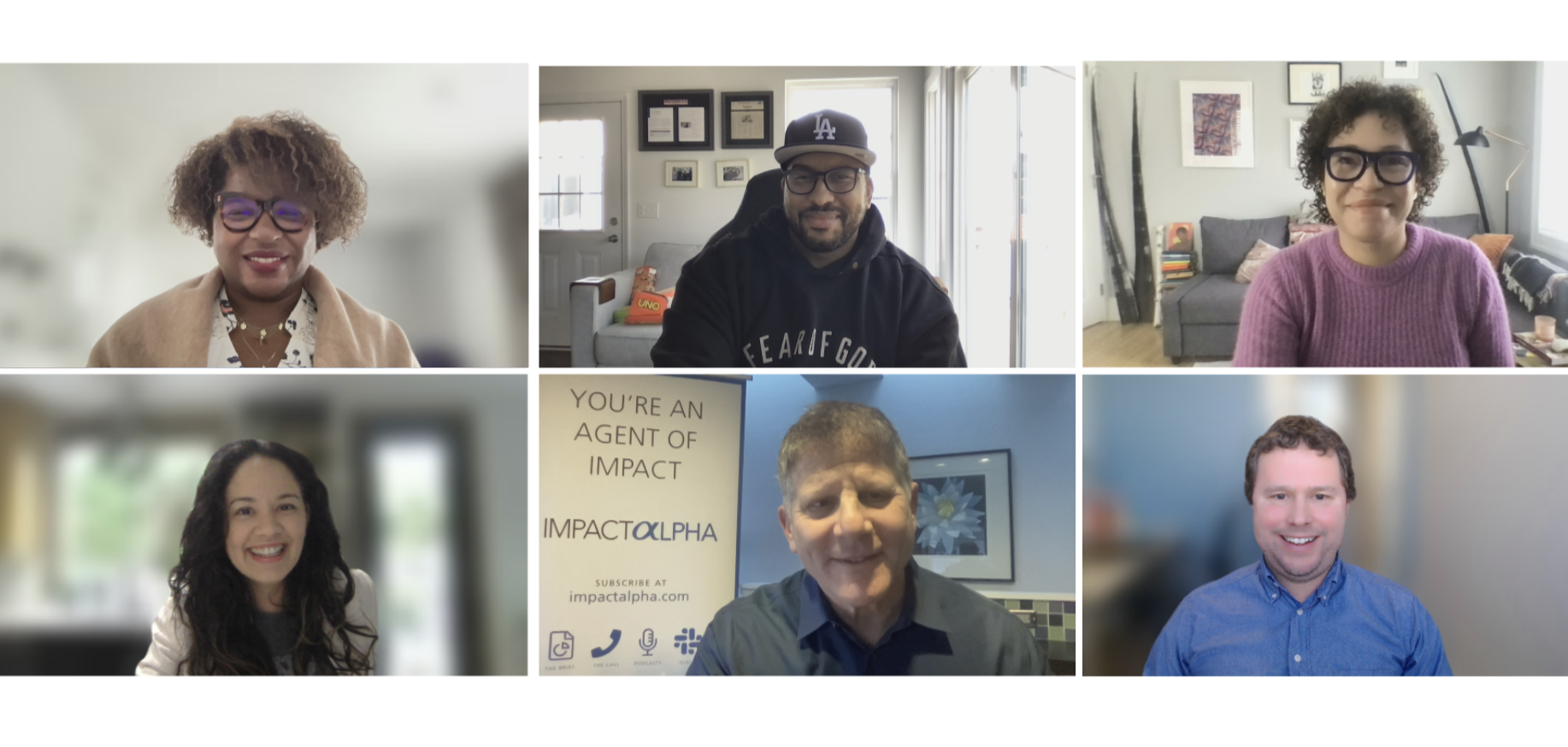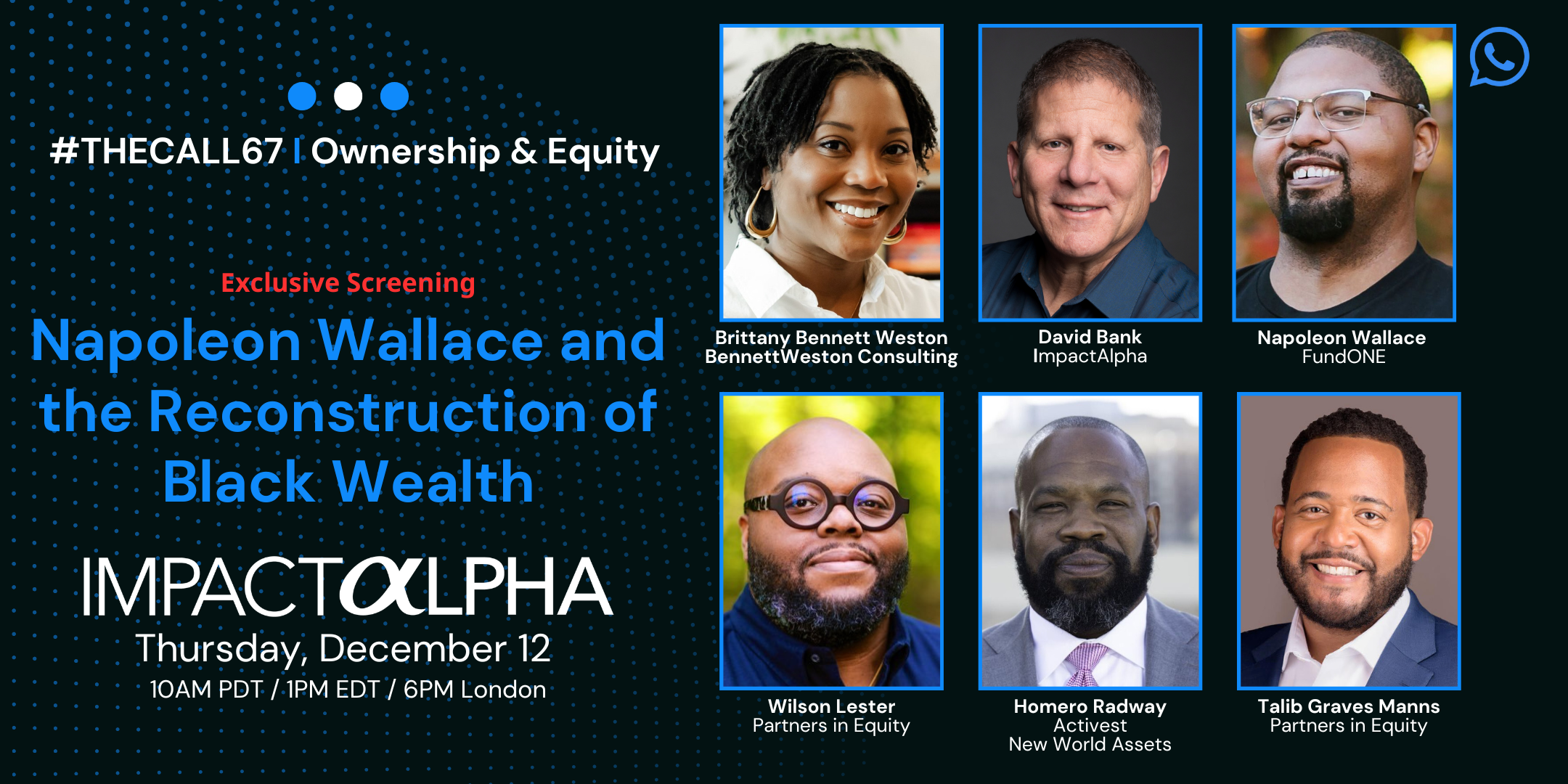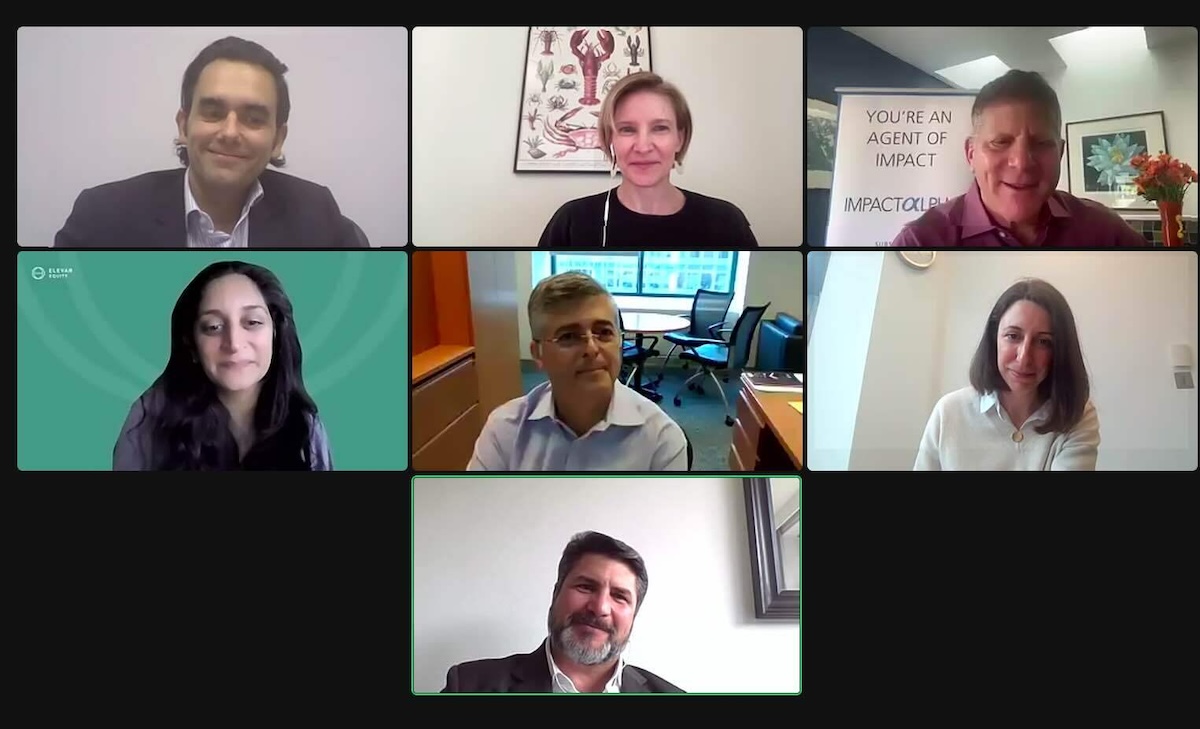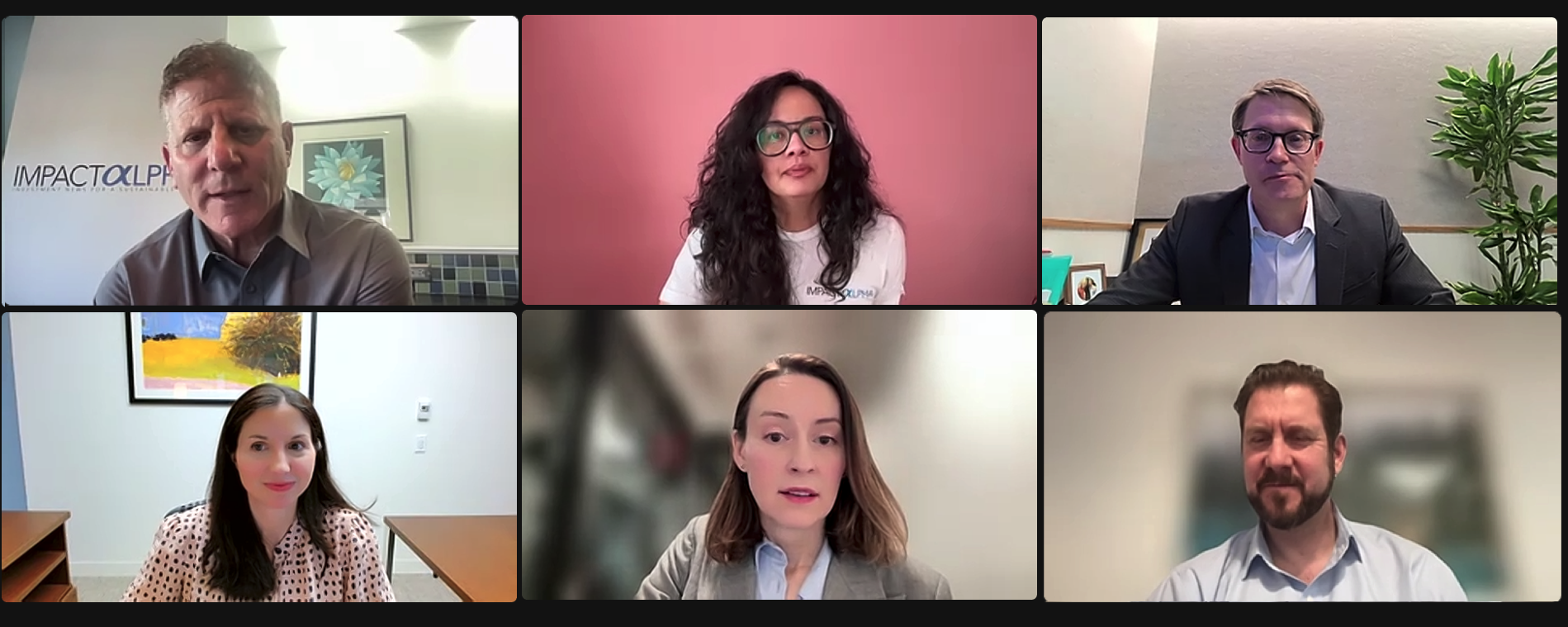ImpactAlpha, Mar. 31 – The search for a universal metric to guide investments in racial justice and equitable wealth-building was…aspirational.
“We are still a little ways away from the winner but we have found a pool of possible winners that could all make sense as possible metrics depending on the situation,” Southern Reconstruction Fund’s Napoleon Wallace said in summing up ImpactAlpha’s Agents of Impact Call No. 50 (see, “Chasing the holy grail of a universal metric for racial equity and wealth-building”).
After a spirited discussion and two rounds of voting, the weight of sentiment landed on wealth itself, and specifically the increase in wealth as measured by assets for BIPOC clients, as proposed by Calvert Impact’s Caitlin Rosser. Calvert Impact is using the metric in its new Mission Driven Bank Fund with Elizabeth Park Capital Management to support minority depository institutions and community development financial institutions.
“That is going to be our north star: increase in assets, increase in wealth,” Rosser said.
Closely related, and perhaps more deeply rooted, are pathways to ownership, of businesses, homes, commercial real estate and other assets. Greensboro, N.C.-based Partners in Equity helps Black business owners purchase the commercial buildings in which they operate, building their wealth and preventing displacement in the face of rising rents.
“It’s so important for our communities to have access to the ability to own this asset,” said Partners in Equity’s Wilson Lester. “In most cases, business owners are saving over $1,000 a month in their monthly payment. That’s wealth that is hitting the bottom line can be reinvested in the business, or can be saved for the future. It’s allowing that business owner to take a look at how they can change the wealth dynamic in their family in just one generation.”
Wallace himself made a pitch to adapt a metric commonly used to compare health interventions for a broader set of social-change strategies. Quality Adjusted Life Years, or QALYs, determine the impact of an intervention by assessing patient’s duration and quality of life.
“The base concept which holds is that there are few impact goals that are as universal as a longer and happier life,” said Wallace, who himself faces a challenging diagnosis of amyotrophic lateral sclerosis, or ALS, and spoke through a text-to-voice translator (see, “Napoleon Wallace: Restorative capital for Black wealth”).
“The highest logical hurdle is to think of the investment of capital as a potentially life-changing intervention. Who knows if we will get there but we think it is surely worth a shot,” he said. “Don’t know if there is any chance of running an income statement that shows the amount of years that a company has added to the world.”
Southern reconstruction
The tenor of the discussion reflected an understanding that any metric, and any intervention, must be rooted in the communities being served.
Conversations about racial equity must run through the south, said Dorian Burton, who with Wallace is standing up Southern Reconstruction Fund’s Ownership and New Equity Fund, or FundONE. As many as 90% of rural Black families live in the south. And just six southern cities – Memphis, Birmingham, New Orleans, Charlotte, Houston and Atlanta – touch half of the nation’s undercapitalized Black communities, Burton said.
Recapitalizing such communities requires more than philanthropy, which tends to “reward the people who tell the worst stories the best about the communities that we serve,” he said. “It was really clear that we needed to think about different types of capital for folks to live up to be able to thrive in place, and to really make long term change.”
FundONE, which is making early investments in impact fund managers with provocative theses for racial wealth-building, is aiming to raise enough capital to drive transformative change.
“I have never heard a billion dollars be considered bold, unless folks are talking about Black communities,” Burton said. “For us, it wasn’t enough just to bring in and fund diverse managers. It really was, ‘How do you bring in and diversify ideas in this space?”
Kellogg Foundation’s Cynthia Muller said an increasing number of investment fund managers are seeing opportunities in underserved communities, if only because the large number of businesses and residents represent potentially valuable customers. Social scientists might call such strategies “targeted universalism,” that is, solving for the most marginalized serves to lift up all income groups.
“They’re not calling it targeted universalism,” Muller said. “Nonetheless, it still gets at these markets in a way where you can engage a larger swath of communities, in this case, Black communities. If you start to design that way, everything kind of falls into place.”
Identifying the right metrics is part of the broader work of replacing narratives that have reinforced inequities, said Erika Seth Davies, CEO of Rhia Ventures, an impact fund focused on reproductive and maternal health.
“We’ve got to question those and come up with alternative counter-narratives, and move those forward to really be clear that this is a systems-change effort,” she said. “So it really is holding everyone accountable for advancing this work.”
Agents of Impact
Metrics and measurement turns out to be a surprisingly exciting topic, judging from the lively exchanges in the Call’s chat feature.
“We spend A LOT of time measuring what job quality looks like for the extreme poor,” said Kate Cochran of Upaya Social Ventures.
“Measuring economic prosperity in disinvested communities,” chimed in Pamela Roussos from WeavingImpact.
Holly Windram of Hope Network’s Michigan Education Corps is focused on “Metrics on implementation of academic intervention (dosage/fidelity), and student learning outcomes, (among other things).”
Call regular Yangbo Du is keen on “value per acre, since it helps illustrate that poor and working class neighborhoods are actually amongst the most financially productive.”
“I want to measure indirect job creation – clean, QUALITY jobs of the future,” said Tracy Gray of The 22 Fund.
Founders First Capital Partners tracks impact by measuring the health of diverse small businesses across the country,” said Sawm Soltani. “The key metrics we focus on are job growth, job creation, revenue growth, and access to funding.”
Cathi Kim from Inclusiv is working with credit unions “to advance financial well being, climate justice and wealth building in historically marginalized communities”… Anna Smukowski from Enterprise Community Loan Fund is focusing on dismantling systemic racism in affordable housing. Social Finance’s Catherine Dun Rappaport has a particular focus on investments that support racial and economic justice… Karyn Polak is bringing a legal lens to equitable development and community wealth building… Curtis Peterson works with impact-driven startups and funders, mostly in women’s sexual and reproductive health… Jamil Ellis from Unified Ground connects environmental and sustainable investments to citizen-based organizations and minority-owners business enterprises.
Zhaundra Jones is vice president of philanthropy and learning at Women’s Foundation of Alabama… Impactable’s Catherine Griffin is building measurement tools to “direct capital and human ingenuity towards the solutions that can drive lasting, scalable change”… SVT Group’s Sara Olsen specializes in impact management… Sarah Cone heads Social Impact Capital… Kyle Mylius is with Humanize Wealth in Seattle…
Marc Tannous is in the ESG practice group at Silver Leaf Partners… Katie Macc is chief operating officer of the Sorenson Impact Center… Billy Gridley is “chasing impact” with Aton Forest, Benedict Partners and Climate Capital and Media… Delilah Rothenberg of Predistribution Initiative is focused on co-creating regenerative investment structures and practices in mainstream markets to share more wealth and influence with workers and communities…
Jon Schwartz from Aeris is applying impact metrics to community development financial institutions… Anne Weisberg from Women in Renewable Industries and Sustainable Energy is working on making the clean energy sector diverse, equitable and inclusive… Vanessa Liew, a senior at Wharton, is interested in energy transition investing… Michelle Atherton helps measure community well-being with the Social Progress Index… John Holdsclaw IV is CEO of Rochdale Capital… Tamika Tyson from TGC Impact “invests patient capital in growing small businesses led by underrepresented and overlooked founders located in the South.” Krishna Omolade is with the Heron Foundation.
“Metrics wonks unite,” said Kyle Roland of Proof.io. “It’s metrics madness everyday over here.”












